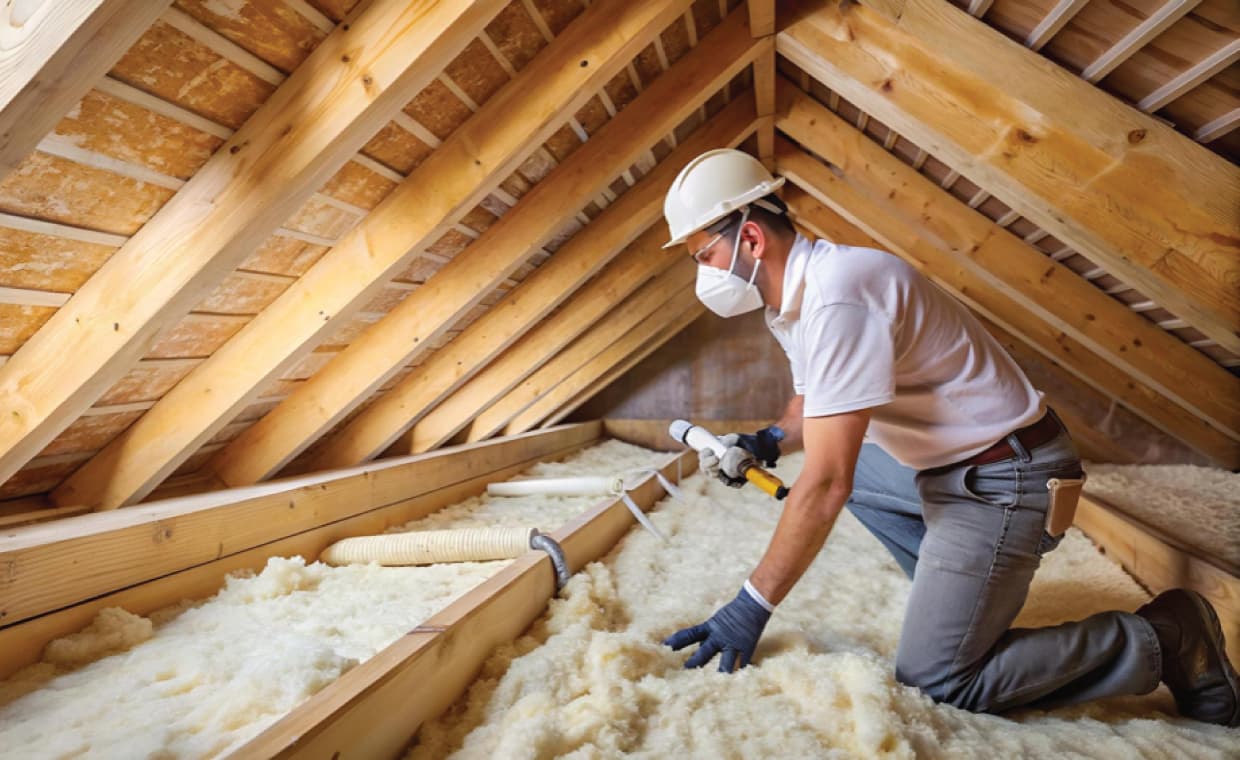
Maintaining energy efficiency in your home is more crucial than ever, not just for reducing utility bills but also for enhancing overall comfort and sustainability. One often overlooked aspect of home maintenance that significantly impacts energy efficiency is the condition of your attic and crawl spaces. By following tips for attic and crawl space maintenance, you can ensure proper upkeep of these areas, leading to substantial improvements in energy savings and home comfort. This article explores essential tips for managing your attic and crawl space to maximise energy efficiency.
Understanding the Role of Attics and Crawl Spaces

Attics and crawl spaces are critical components of your home’s structure and play a significant role in energy efficiency. The attic primarily functions as a buffer between your home and the outside environment, influencing temperature regulation within your living spaces. It acts as an insulation layer, helping to keep your home warm in winter and cool in summer. Proper insulation and ventilation in the attic prevent heat transfer, reducing the need for excessive heating and cooling. Crawl spaces, on the other hand, are the areas beneath your home that can influence indoor air quality and moisture levels. These spaces are often less visible but can have a profound impact on the overall energy efficiency of your home. Moisture control and insulation in crawl spaces are crucial for preventing issues such as mold growth and wood rot, which can compromise the structural integrity of your home and lead to higher energy costs.
Insulation Strategies

Insulation is a key factor in maintaining energy efficiency. The type of insulation you choose and how well it is installed can greatly affect your home’s energy performance. Common insulation materials include fiberglass, foam board, spray foam, and cellulose. Each of these materials has its advantages and limitations. Fiberglass insulation is one of the most widely used types due to its affordability and effectiveness. It comes in batts or rolls and is relatively easy to install. However, it can lose effectiveness if compressed or wet. Foam board insulation offers high insulating value per inch of thickness, making it suitable for areas with limited space. Spray foam insulation provides excellent air sealing and insulating properties but can be more expensive. Cellulose insulation, made from recycled paper products, is eco-friendly and effective at filling gaps and voids.
Ventilation Best Practices

Proper ventilation is crucial for maintaining a healthy and energy-efficient home. In attics, ventilation helps to prevent moisture buildup, which can lead to mold growth and damage to insulation. Good ventilation promotes airflow, which helps to regulate temperature and improve the effectiveness of insulation.
Attic ventilation can be achieved through various methods. Soffit vents are installed under the eaves of the roof and allow fresh air to enter the attic. Ridge vents, placed at the peak of the roof, allow hot air to escape. Power ventilators can be used to increase air movement, especially in homes with limited natural ventilation. In crawl spaces, ventilation is equally important for moisture control. Foundation vents help to provide airflow and reduce humidity levels. Dehumidifiers can be used to manage excessive moisture, especially in areas prone to high humidity. Vapor barriers, typically made of plastic, are installed on the ground to prevent moisture from seeping into the crawl space.
Moisture Control

Controlling moisture is essential for maintaining energy efficiency and preventing damage. In attics, moisture can accumulate and lead to issues such as mold growth and damage to insulation. Proper insulation and ventilation are key to managing moisture effectively. Using moisture barriers and vapor retarders can help to prevent moisture from penetrating insulation and causing damage.
In crawl spaces, moisture control is equally important. Installing vapor barriers on the ground prevents moisture from seeping into the space. Sump pumps can be used to manage groundwater and prevent flooding. Proper drainage and humidity management are crucial for preventing moisture-related problems. Effective moisture control not only protects your home’s structural integrity but also contributes to better indoor air quality and energy efficiency.
Professional Help vs. DIY

While many maintenance tasks can be handled by homeowners, there are times when professional help is necessary. Complex insulation or ventilation issues may require specialised expertise. Extensive moisture problems or structural concerns often require the skills of a professional to ensure that the issues are addressed correctly.
For those seeking professional assistance, https://envirosmartsolution.com/ offers a range of services tailored to improving energy efficiency and addressing issues in attics and crawl spaces. They provide valuable expertise and solutions for maintaining optimal home performance. For DIY enthusiasts, many basic tasks can be performed to maintain attics and crawl spaces. However, it’s important to follow safety precautions and understand the limits of your skills. Professional assistance can provide peace of mind and ensure that critical issues are handled effectively.
Conclusion
Maintaining energy efficiency through tips for attic and crawl space maintenance is a vital aspect of home upkeep. By understanding the roles of these spaces, implementing effective insulation and ventilation strategies, sealing air leaks, and controlling moisture, homeowners can achieve significant improvements in energy efficiency and overall comfort. Regular maintenance and inspections, guided by these tips, further contribute to long-term energy savings and a healthier living environment. Taking these steps will not only help reduce utility bills but also enhance the overall quality of your home.
Also Read:
3 Unglamorous But Essential Systems to Keep in Excellent Home Working Order






























